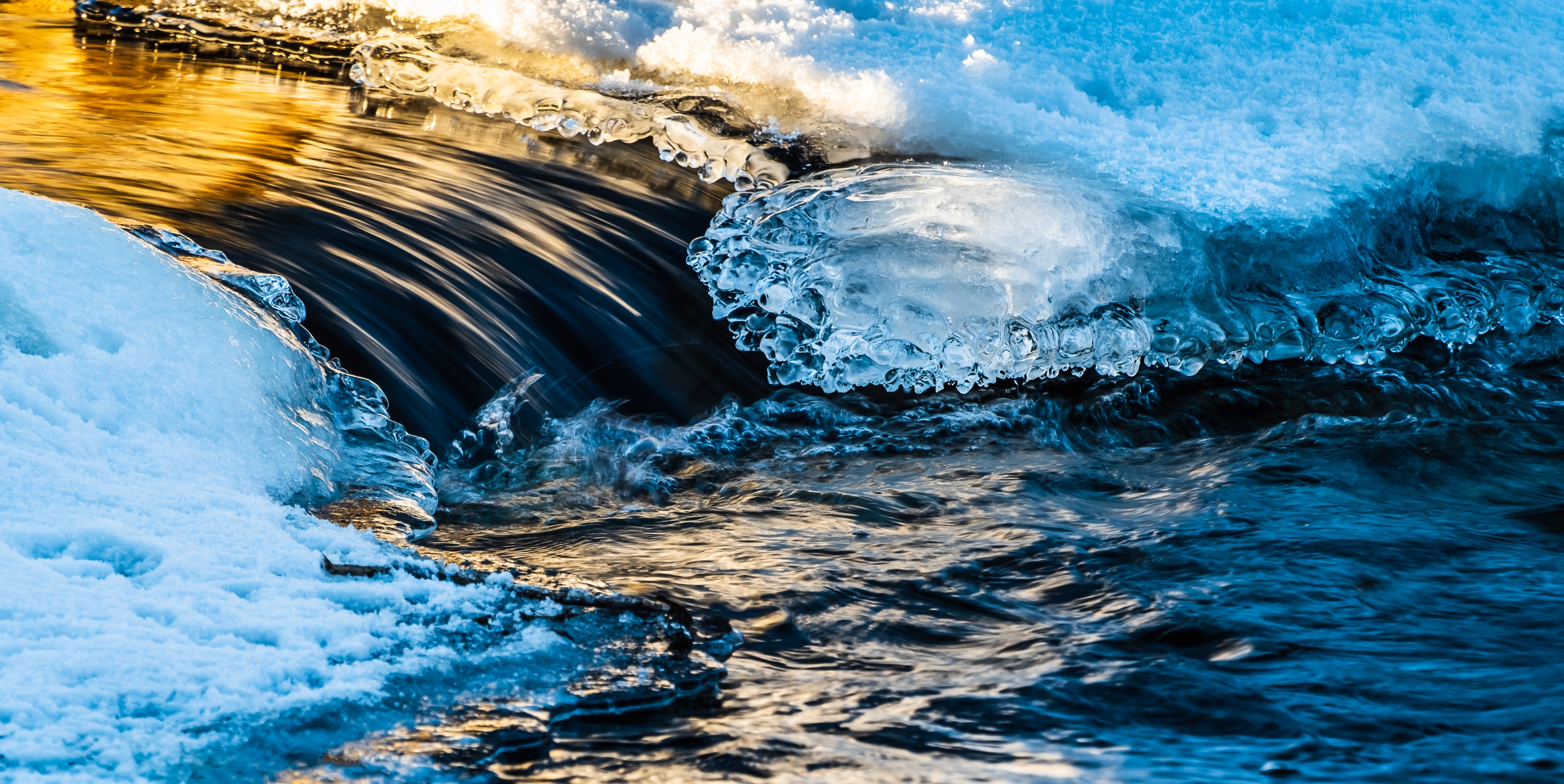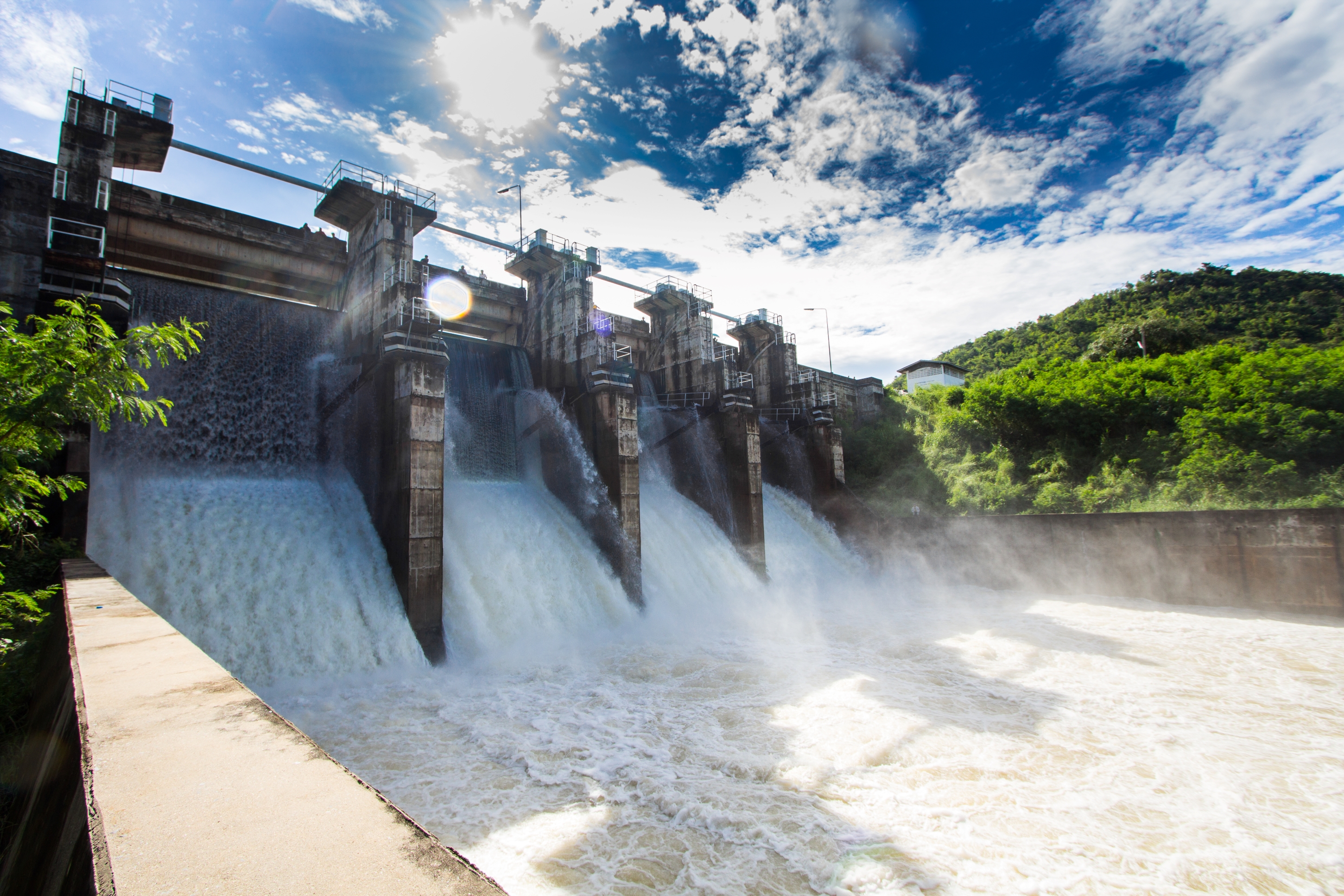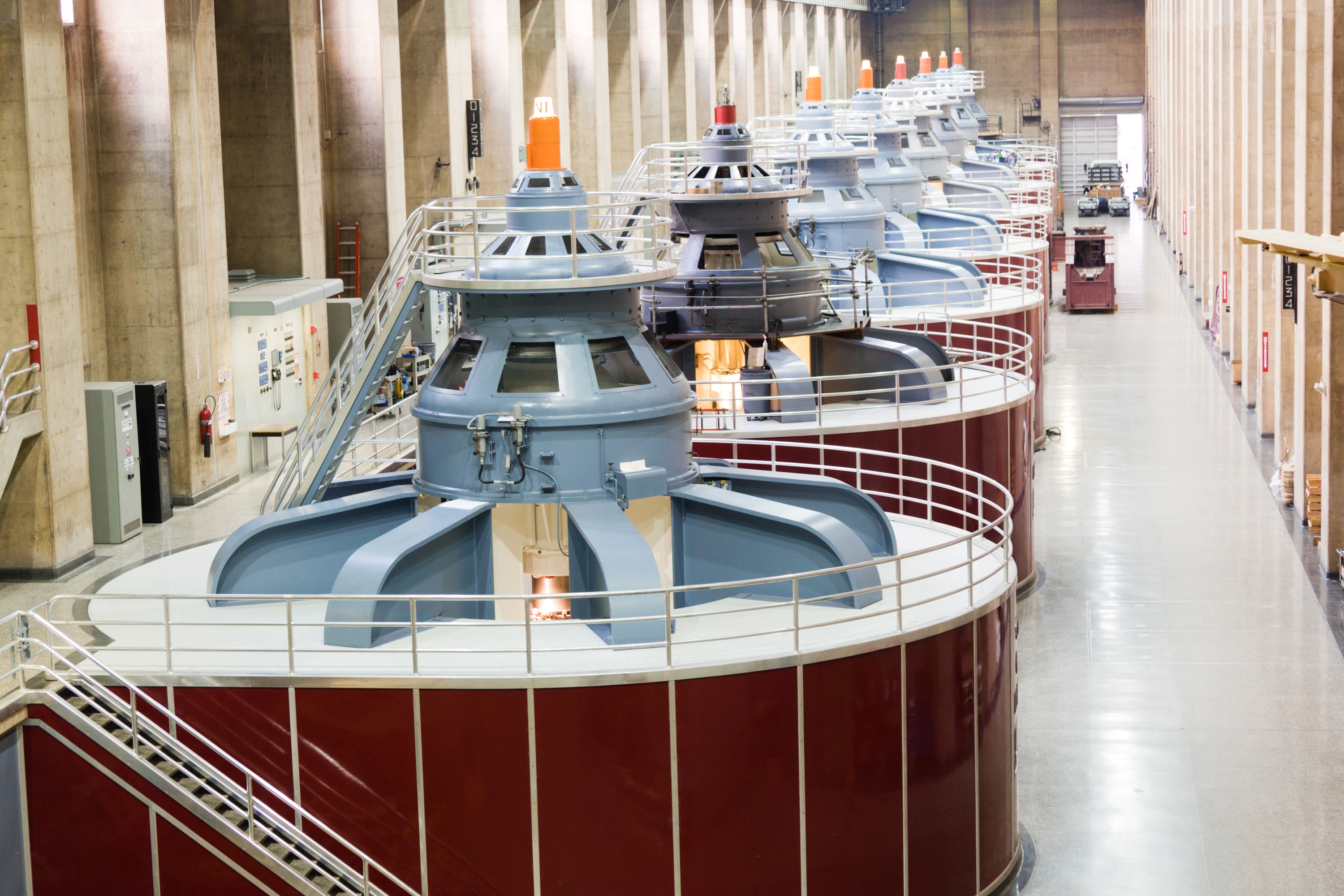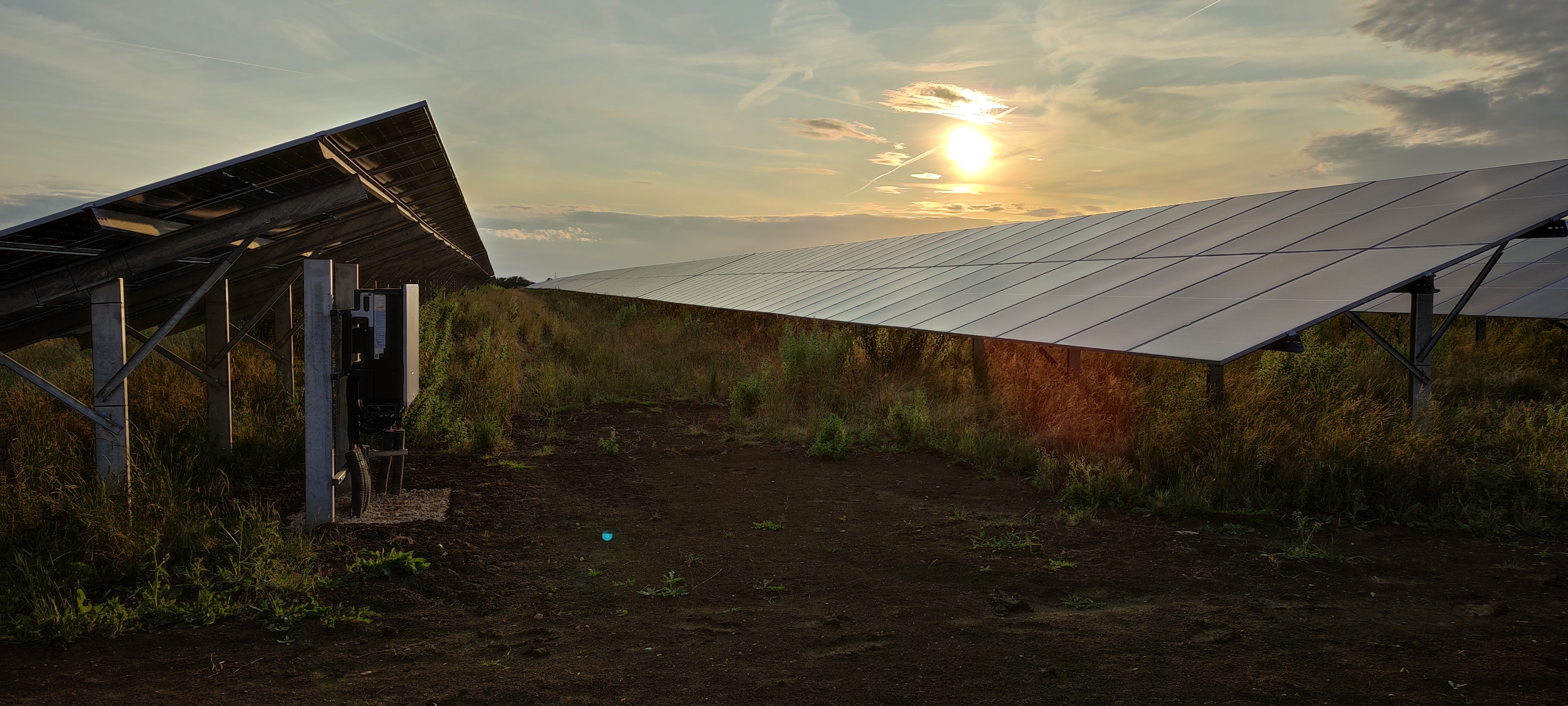Flowing forward: A 101 of hydropower technology


Hydropower is one of the oldest and most widely-used clean energy source, accounting for more than 60% of the world’s renewable generation. Furthermore, if the world is to decarbonize and meet the climate goals set in the Paris Agreement, hydropower must more than double by 2050. In this insight, we explore the evolution of hydro power, its role in the global transition towards cleaner energy, and discuss why investing in hydropower should form a growing part of a diversified investment portfolio.
Waves of change
Perhaps the earliest use of hydropower dates to the third century BC, when the ancient Greeks constructed water mills to grind grain and perform other mechanical tasks. But hydropower, as we know it today, first emerged in the 19th century, with the creation of the electrical generator. The first hydroelectric power plant began operating on September 30, 1882, in Appleton, Wisconsin.
Fast forward to 2022, hydropower supplied one-sixth of the world's electricity – more than all other renewables combined. And with the need to transition towards a greener global economy fuelled by clean energy growing every day, increased investment in hydropower will be paramount over the coming years.
Turning the tide
While the adoption of renewable energy has increased considerably in recent years, it still falls short of climate requirements. According to the International Energy Agency, renewable energy sources made up about 26% of the world's total energy consumption in 2020. This must rise to about two-thirds by 2050 if we are to curb rising temperatures and deliver on net zero.
Greater investment in hydropower will be instrumental in achieving net zero. Hydropower is one of the most efficient sources of renewable energy, producing the most energy per unit of capacity of all renewable technologies. But perhaps most important to the clean energy transformation is hydropower’s contribution to the security and flexibility of electricity provision.
Hydropower plants have the capability to increase or decrease their electricity generation. This, along with their water storage capabilities, permits hydropower facilities to adjust rapidly to demand swings and patch any holes in energy supply that may result from other renewables – particularly solar PV and wind, whose energy production output hinges largely on uncontrollable factors such as the weather and time of day. This makes hydropower instrumental in supporting the rapid deployment and integration of renewables into the global energy mix.
Go with the flow
Given its sustainability credentials, it is unsurprising hydropower is already the most widely used source of clean power, representing more than 60% of the world’s renewable generation. Yet, to meet the net zero emissions by 2050 scenario, hydropower must maintain an average annual generation growth rate of about 3% from 2022-2030 to provide approximately 5700TWh of electricity per year.
While hydropower’s growth potential poses a compelling investment opportunity, the asset has historically been underrepresented in investment portfolios, with institutional investors only dipping their toes in the water in recent years. Research indicates wind and solar assets are much more frequently held by institutional investors than hydropower assets, while few general investors have exposure to hydro at all.
This is largely due to the price and complexity of accessing investment opportunities in hydropower, as well as the regulatory challenges investors face when seeking to acquire existing hydropower facilities. In addition, unlike many alternative renewables, hydropower plants are not typically subsidised by governments.
Powering diversification
Aside from its ability to deliver stable and resilient cashflows, hydropower offers significant diversification potential. Given hydro plants are typically independent from fixed term government remuneration structures, they benefit from greater flexibility in the electricity prices achieved on independent power markets.
Moreover, the proliferation of smaller facilities such as run-of-river hydropower plants – which harness river energy and offer little or no storage capability – provides investors cheaper and easier access to hydro. Their lack of a reservoir means they have a smaller impact on the surrounding natural environment.
Nordic countries in particular offer considerable investment potential for this type of hydropower facility, given the region’s favourable geography – including its mountainous terrain – and its ongoing push to supply more renewable power to the wider European market.

Hydropower in action
In 2022, Downing acquired a portfolio of two operational run-of-river hydropower plants situated in Sweden, forecasted to produce 18GWh per year. These are Downing’s first hydropower assets located in Sweden’s southern SE4 pricing region, which has the highest wholesale power prices in the country and benefits from export cables to continental Europe.
ESG credentials
Aside from improving national energy security through fostering greater access to clean and reliable energy, the construction and maintenance of hydropower facilities creates numerous high-quality jobs within the local community. This will have a positive impact in many of the less economically developed regions where hydropower growth is expected over the coming years, including parts of Africa and Latin America.
There is also meaningful progress being made on the governance of hydropower facilities across the world. For example, the European Investment Bank – which provides funding to projects that support EU objectives, most notably actions to mitigate climate change – has established a set of comprehensive guidelines for hydropower facilities that carefully consider the needs of local communities and the environment.
As well as offering stable, resilient and more predictable returns, hydropower also resembles an ESG-positive investment. While the case for ‘E’ in ESG regarding hydropower is somewhat obvious, the social aspect is certainly worth considering. Institutional investors looking for an investment that diversifies their portfolios and offers strong ESG characteristics should consider the hydropower opportunities that present themselves whether that’s in the Nordics or the UK.

Hydropower is one of the oldest and most widely-used clean energy source, accounting for more than 60% of the world’s renewable generation. Furthermore, if the world is to decarbonize and meet the climate goals set in the Paris Agreement, hydropower must more than double by 2050. In this insight, we explore the evolution of hydro power, its role in the global transition towards cleaner energy, and discuss why investing in hydropower should form a growing part of a diversified investment portfolio.
Waves of change
Perhaps the earliest use of hydropower dates to the third century BC, when the ancient Greeks constructed water mills to grind grain and perform other mechanical tasks. But hydropower, as we know it today, first emerged in the 19th century, with the creation of the electrical generator. The first hydroelectric power plant began operating on September 30, 1882, in Appleton, Wisconsin.
Fast forward to 2022, hydropower supplied one-sixth of the world's electricity – more than all other renewables combined. And with the need to transition towards a greener global economy fuelled by clean energy growing every day, increased investment in hydropower will be paramount over the coming years.
Turning the tide
While the adoption of renewable energy has increased considerably in recent years, it still falls short of climate requirements. According to the International Energy Agency, renewable energy sources made up about 26% of the world's total energy consumption in 2020. This must rise to about two-thirds by 2050 if we are to curb rising temperatures and deliver on net zero.
Greater investment in hydropower will be instrumental in achieving net zero. Hydropower is one of the most efficient sources of renewable energy, producing the most energy per unit of capacity of all renewable technologies. But perhaps most important to the clean energy transformation is hydropower’s contribution to the security and flexibility of electricity provision.
Hydropower plants have the capability to increase or decrease their electricity generation. This, along with their water storage capabilities, permits hydropower facilities to adjust rapidly to demand swings and patch any holes in energy supply that may result from other renewables – particularly solar PV and wind, whose energy production output hinges largely on uncontrollable factors such as the weather and time of day. This makes hydropower instrumental in supporting the rapid deployment and integration of renewables into the global energy mix.
Go with the flow
Given its sustainability credentials, it is unsurprising hydropower is already the most widely used source of clean power, representing more than 60% of the world’s renewable generation. Yet, to meet the net zero emissions by 2050 scenario, hydropower must maintain an average annual generation growth rate of about 3% from 2022-2030 to provide approximately 5700TWh of electricity per year.
While hydropower’s growth potential poses a compelling investment opportunity, the asset has historically been underrepresented in investment portfolios, with institutional investors only dipping their toes in the water in recent years. Research indicates wind and solar assets are much more frequently held by institutional investors than hydropower assets, while few general investors have exposure to hydro at all.
This is largely due to the price and complexity of accessing investment opportunities in hydropower, as well as the regulatory challenges investors face when seeking to acquire existing hydropower facilities. In addition, unlike many alternative renewables, hydropower plants are not typically subsidised by governments.
Powering diversification
Aside from its ability to deliver stable and resilient cashflows, hydropower offers significant diversification potential. Given hydro plants are typically independent from fixed term government remuneration structures, they benefit from greater flexibility in the electricity prices achieved on independent power markets.
Moreover, the proliferation of smaller facilities such as run-of-river hydropower plants – which harness river energy and offer little or no storage capability – provides investors cheaper and easier access to hydro. Their lack of a reservoir means they have a smaller impact on the surrounding natural environment.
Nordic countries in particular offer considerable investment potential for this type of hydropower facility, given the region’s favourable geography – including its mountainous terrain – and its ongoing push to supply more renewable power to the wider European market.

Hydropower in action
In 2022, Downing acquired a portfolio of two operational run-of-river hydropower plants situated in Sweden, forecasted to produce 18GWh per year. These are Downing’s first hydropower assets located in Sweden’s southern SE4 pricing region, which has the highest wholesale power prices in the country and benefits from export cables to continental Europe.
ESG credentials
Aside from improving national energy security through fostering greater access to clean and reliable energy, the construction and maintenance of hydropower facilities creates numerous high-quality jobs within the local community. This will have a positive impact in many of the less economically developed regions where hydropower growth is expected over the coming years, including parts of Africa and Latin America.
There is also meaningful progress being made on the governance of hydropower facilities across the world. For example, the European Investment Bank – which provides funding to projects that support EU objectives, most notably actions to mitigate climate change – has established a set of comprehensive guidelines for hydropower facilities that carefully consider the needs of local communities and the environment.
As well as offering stable, resilient and more predictable returns, hydropower also resembles an ESG-positive investment. While the case for ‘E’ in ESG regarding hydropower is somewhat obvious, the social aspect is certainly worth considering. Institutional investors looking for an investment that diversifies their portfolios and offers strong ESG characteristics should consider the hydropower opportunities that present themselves whether that’s in the Nordics or the UK.

Hydropower is one of the oldest and most widely-used clean energy source, accounting for more than 60% of the world’s renewable generation. Furthermore, if the world is to decarbonize and meet the climate goals set in the Paris Agreement, hydropower must more than double by 2050. In this insight, we explore the evolution of hydro power, its role in the global transition towards cleaner energy, and discuss why investing in hydropower should form a growing part of a diversified investment portfolio.
Waves of change
Perhaps the earliest use of hydropower dates to the third century BC, when the ancient Greeks constructed water mills to grind grain and perform other mechanical tasks. But hydropower, as we know it today, first emerged in the 19th century, with the creation of the electrical generator. The first hydroelectric power plant began operating on September 30, 1882, in Appleton, Wisconsin.
Fast forward to 2022, hydropower supplied one-sixth of the world's electricity – more than all other renewables combined. And with the need to transition towards a greener global economy fuelled by clean energy growing every day, increased investment in hydropower will be paramount over the coming years.
Turning the tide
While the adoption of renewable energy has increased considerably in recent years, it still falls short of climate requirements. According to the International Energy Agency, renewable energy sources made up about 26% of the world's total energy consumption in 2020. This must rise to about two-thirds by 2050 if we are to curb rising temperatures and deliver on net zero.
Greater investment in hydropower will be instrumental in achieving net zero. Hydropower is one of the most efficient sources of renewable energy, producing the most energy per unit of capacity of all renewable technologies. But perhaps most important to the clean energy transformation is hydropower’s contribution to the security and flexibility of electricity provision.
Hydropower plants have the capability to increase or decrease their electricity generation. This, along with their water storage capabilities, permits hydropower facilities to adjust rapidly to demand swings and patch any holes in energy supply that may result from other renewables – particularly solar PV and wind, whose energy production output hinges largely on uncontrollable factors such as the weather and time of day. This makes hydropower instrumental in supporting the rapid deployment and integration of renewables into the global energy mix.
Go with the flow
Given its sustainability credentials, it is unsurprising hydropower is already the most widely used source of clean power, representing more than 60% of the world’s renewable generation. Yet, to meet the net zero emissions by 2050 scenario, hydropower must maintain an average annual generation growth rate of about 3% from 2022-2030 to provide approximately 5700TWh of electricity per year.
While hydropower’s growth potential poses a compelling investment opportunity, the asset has historically been underrepresented in investment portfolios, with institutional investors only dipping their toes in the water in recent years. Research indicates wind and solar assets are much more frequently held by institutional investors than hydropower assets, while few general investors have exposure to hydro at all.
This is largely due to the price and complexity of accessing investment opportunities in hydropower, as well as the regulatory challenges investors face when seeking to acquire existing hydropower facilities. In addition, unlike many alternative renewables, hydropower plants are not typically subsidised by governments.
Powering diversification
Aside from its ability to deliver stable and resilient cashflows, hydropower offers significant diversification potential. Given hydro plants are typically independent from fixed term government remuneration structures, they benefit from greater flexibility in the electricity prices achieved on independent power markets.
Moreover, the proliferation of smaller facilities such as run-of-river hydropower plants – which harness river energy and offer little or no storage capability – provides investors cheaper and easier access to hydro. Their lack of a reservoir means they have a smaller impact on the surrounding natural environment.
Nordic countries in particular offer considerable investment potential for this type of hydropower facility, given the region’s favourable geography – including its mountainous terrain – and its ongoing push to supply more renewable power to the wider European market.

Hydropower in action
In 2022, Downing acquired a portfolio of two operational run-of-river hydropower plants situated in Sweden, forecasted to produce 18GWh per year. These are Downing’s first hydropower assets located in Sweden’s southern SE4 pricing region, which has the highest wholesale power prices in the country and benefits from export cables to continental Europe.
ESG credentials
Aside from improving national energy security through fostering greater access to clean and reliable energy, the construction and maintenance of hydropower facilities creates numerous high-quality jobs within the local community. This will have a positive impact in many of the less economically developed regions where hydropower growth is expected over the coming years, including parts of Africa and Latin America.
There is also meaningful progress being made on the governance of hydropower facilities across the world. For example, the European Investment Bank – which provides funding to projects that support EU objectives, most notably actions to mitigate climate change – has established a set of comprehensive guidelines for hydropower facilities that carefully consider the needs of local communities and the environment.
As well as offering stable, resilient and more predictable returns, hydropower also resembles an ESG-positive investment. While the case for ‘E’ in ESG regarding hydropower is somewhat obvious, the social aspect is certainly worth considering. Institutional investors looking for an investment that diversifies their portfolios and offers strong ESG characteristics should consider the hydropower opportunities that present themselves whether that’s in the Nordics or the UK.

Hydropower is one of the oldest and most widely-used clean energy source, accounting for more than 60% of the world’s renewable generation. Furthermore, if the world is to decarbonize and meet the climate goals set in the Paris Agreement, hydropower must more than double by 2050. In this insight, we explore the evolution of hydro power, its role in the global transition towards cleaner energy, and discuss why investing in hydropower should form a growing part of a diversified investment portfolio.
Waves of change
Perhaps the earliest use of hydropower dates to the third century BC, when the ancient Greeks constructed water mills to grind grain and perform other mechanical tasks. But hydropower, as we know it today, first emerged in the 19th century, with the creation of the electrical generator. The first hydroelectric power plant began operating on September 30, 1882, in Appleton, Wisconsin.
Fast forward to 2022, hydropower supplied one-sixth of the world's electricity – more than all other renewables combined. And with the need to transition towards a greener global economy fuelled by clean energy growing every day, increased investment in hydropower will be paramount over the coming years.
Turning the tide
While the adoption of renewable energy has increased considerably in recent years, it still falls short of climate requirements. According to the International Energy Agency, renewable energy sources made up about 26% of the world's total energy consumption in 2020. This must rise to about two-thirds by 2050 if we are to curb rising temperatures and deliver on net zero.
Greater investment in hydropower will be instrumental in achieving net zero. Hydropower is one of the most efficient sources of renewable energy, producing the most energy per unit of capacity of all renewable technologies. But perhaps most important to the clean energy transformation is hydropower’s contribution to the security and flexibility of electricity provision.
Hydropower plants have the capability to increase or decrease their electricity generation. This, along with their water storage capabilities, permits hydropower facilities to adjust rapidly to demand swings and patch any holes in energy supply that may result from other renewables – particularly solar PV and wind, whose energy production output hinges largely on uncontrollable factors such as the weather and time of day. This makes hydropower instrumental in supporting the rapid deployment and integration of renewables into the global energy mix.
Go with the flow
Given its sustainability credentials, it is unsurprising hydropower is already the most widely used source of clean power, representing more than 60% of the world’s renewable generation. Yet, to meet the net zero emissions by 2050 scenario, hydropower must maintain an average annual generation growth rate of about 3% from 2022-2030 to provide approximately 5700TWh of electricity per year.
While hydropower’s growth potential poses a compelling investment opportunity, the asset has historically been underrepresented in investment portfolios, with institutional investors only dipping their toes in the water in recent years. Research indicates wind and solar assets are much more frequently held by institutional investors than hydropower assets, while few general investors have exposure to hydro at all.
This is largely due to the price and complexity of accessing investment opportunities in hydropower, as well as the regulatory challenges investors face when seeking to acquire existing hydropower facilities. In addition, unlike many alternative renewables, hydropower plants are not typically subsidised by governments.
Powering diversification
Aside from its ability to deliver stable and resilient cashflows, hydropower offers significant diversification potential. Given hydro plants are typically independent from fixed term government remuneration structures, they benefit from greater flexibility in the electricity prices achieved on independent power markets.
Moreover, the proliferation of smaller facilities such as run-of-river hydropower plants – which harness river energy and offer little or no storage capability – provides investors cheaper and easier access to hydro. Their lack of a reservoir means they have a smaller impact on the surrounding natural environment.
Nordic countries in particular offer considerable investment potential for this type of hydropower facility, given the region’s favourable geography – including its mountainous terrain – and its ongoing push to supply more renewable power to the wider European market.

Hydropower in action
In 2022, Downing acquired a portfolio of two operational run-of-river hydropower plants situated in Sweden, forecasted to produce 18GWh per year. These are Downing’s first hydropower assets located in Sweden’s southern SE4 pricing region, which has the highest wholesale power prices in the country and benefits from export cables to continental Europe.
ESG credentials
Aside from improving national energy security through fostering greater access to clean and reliable energy, the construction and maintenance of hydropower facilities creates numerous high-quality jobs within the local community. This will have a positive impact in many of the less economically developed regions where hydropower growth is expected over the coming years, including parts of Africa and Latin America.
There is also meaningful progress being made on the governance of hydropower facilities across the world. For example, the European Investment Bank – which provides funding to projects that support EU objectives, most notably actions to mitigate climate change – has established a set of comprehensive guidelines for hydropower facilities that carefully consider the needs of local communities and the environment.
As well as offering stable, resilient and more predictable returns, hydropower also resembles an ESG-positive investment. While the case for ‘E’ in ESG regarding hydropower is somewhat obvious, the social aspect is certainly worth considering. Institutional investors looking for an investment that diversifies their portfolios and offers strong ESG characteristics should consider the hydropower opportunities that present themselves whether that’s in the Nordics or the UK.

Please fill out the form to download the full report
Downing LLP does not provide advice or make personal recommendations and investors are strongly urged to seek independent advice before investing. Investments offered on this website carry a higher risk than many other types of investment and prospective investors should be aware that capital is at risk and the value of their investment may go down as well as up. Any investment should only be made on the basis of the relevant product literature and your attention is drawn to the risk, fees and taxation factors contained therein. Tax treatment depends on individual circumstances of each investor and may be subject to change in the future. Past performance is not a reliable indicator of future performance. Downing LLP is authorised and regulated by the Financial Conduct Authority (Firm Reference Number 545025). Registered in England No. OC341575. Registered Office: Downing, 10 Lower Thames Street, London, EC3R 6AF.









